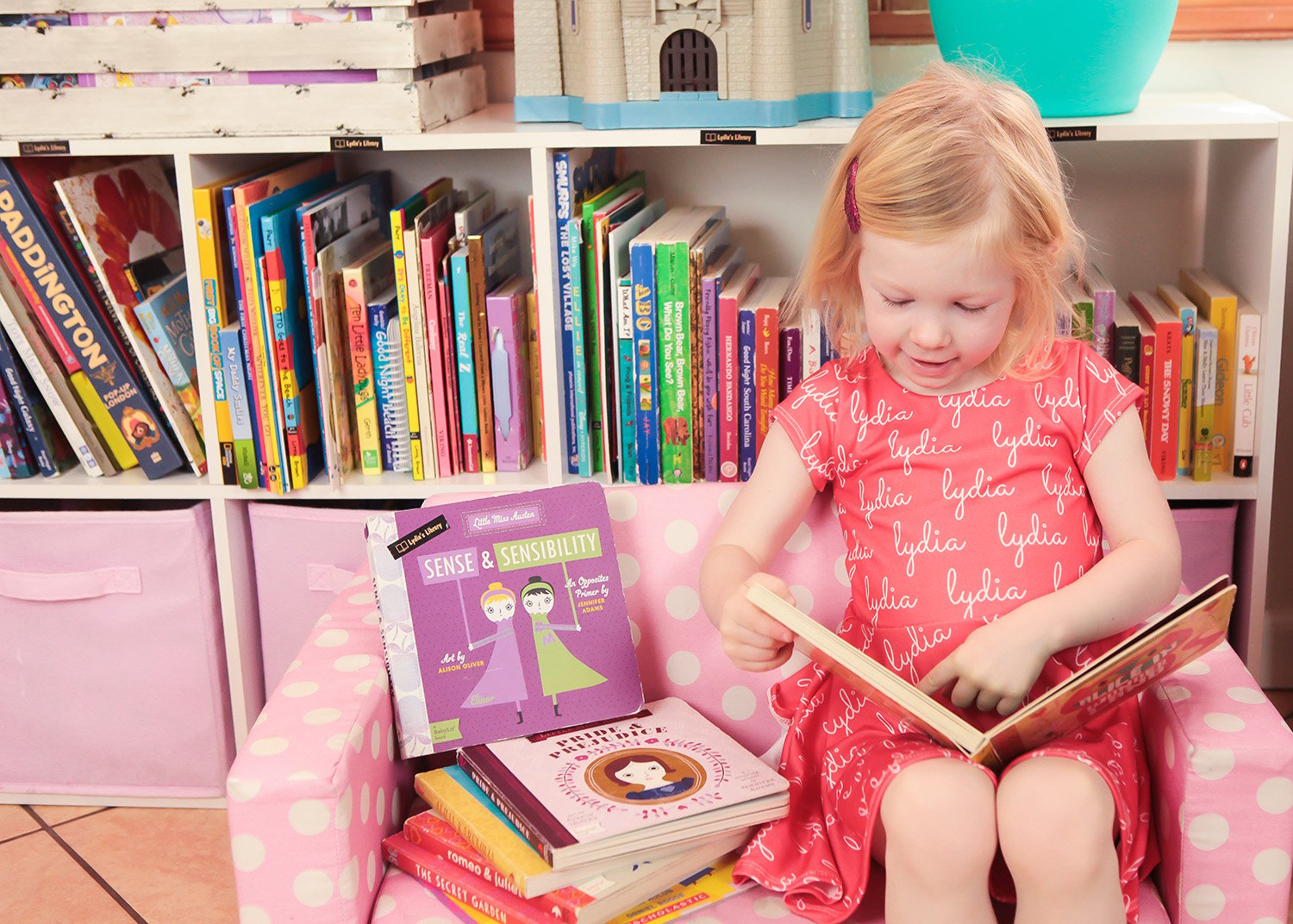As a passionate advocate for nurturing a love of reading in children, I firmly believe that a well-curated home library can be a transformative tool in a child’s intellectual and emotional development. In this comprehensive guide, I will share my expertise on how to build a home library that caters to the evolving needs and interests of children from infancy through the teenage years.
READ ALSO :
The Importance of a Home Library for Children
A home library serves as a gateway to a world of imagination, knowledge, and personal growth for children. By surrounding them with carefully selected books, we can foster a love for reading that will last a lifetime. Studies have shown that children with access to a diverse range of books in their homes tend to perform better academically, exhibit stronger language skills, and develop a deeper understanding of the world around them.
Creating a home library also allows for personalized book selection, ensuring that each child has access to materials that align with their unique developmental stages, interests, and learning styles. This tailored approach can significantly enhance a child’s engagement and enthusiasm for reading, ultimately leading to improved literacy skills and a lifelong appreciation for the written word.
How to Choose Age-Appropriate Books for Infants and Toddlers
When building a home library for the youngest members of your family, it is essential to focus on board books, cloth books, and other durable formats that can withstand the curious hands and mouths of infants and toddlers. These types of books often feature bold, high-contrast images, simple text, and engaging textures that capture a child’s attention and promote early language development.
Some key considerations when selecting books for this age group include:
- Sensory Engagement: Look for books that incorporate different textures, such as soft fabrics, crinkly pages, or raised images, to stimulate a child’s senses and encourage exploration.
- Repetition and Rhythm: Choose books with simple, repetitive language and rhythmic patterns, as these help to reinforce early language skills and foster a sense of familiarity and security.
- Bright, Colorful Illustrations: Opt for books with vibrant, high-contrast illustrations that can captivate a young child’s attention and spark their curiosity.
- Sturdy Construction: Prioritize board books and cloth books that can withstand the wear and tear of little hands and mouths, ensuring that your child’s favorite stories can be enjoyed for years to come.
Recommended Books for Preschoolers and Kindergarteners
As children transition into the preschool and kindergarten years, their interests and attention spans begin to expand. This is an ideal time to introduce picture books, easy-to-read chapter books, and other formats that can challenge their developing literacy skills while still capturing their imagination.
Some recommended titles for this age group include:
- “The Very Hungry Caterpillar” by Eric Carle
- “Chicka Chicka Boom Boom” by Bill Martin Jr. and John Archambault
- “Corduroy” by Don Freeman
- “Llama Llama Red Pajama” by Anna Dewdney
- “The Cat in the Hat” by Dr. Seuss
These books often feature engaging narratives, vibrant illustrations, and recurring characters that can captivate young readers and foster a deeper understanding of storytelling.
Age-Appropriate Book Selection for Elementary School Children
As children progress through the elementary school years, their reading abilities and interests become increasingly diverse. It is essential to provide a range of materials that challenge their growing literacy skills while also catering to their unique preferences and curiosities.
Some key considerations when selecting books for elementary school-aged children include:
- Diverse Genres: Offer a mix of fiction, non-fiction, poetry, and graphic novels to cater to a wide range of interests and learning styles.
- Representation and Inclusivity: Seek out books that feature diverse characters, cultures, and perspectives, promoting a greater understanding of the world around them.
- Complexity and Depth: Gradually introduce more complex narratives, character development, and thematic elements to encourage critical thinking and analytical skills.
- Personal Interests: Encourage children to explore books related to their hobbies, passions, and areas of academic interest, fostering a deeper connection to the material.
By offering a balanced selection of age-appropriate books, you can help elementary school children develop a lifelong love of reading and a thirst for knowledge.
Finding Books that Appeal to Pre-Teens and Teenagers
As children enter the pre-teen and teenage years, their reading preferences can become more nuanced and personal. It is essential to provide a home library that caters to their evolving interests, social-emotional needs, and intellectual curiosity.
When selecting books for this age group, consider the following:
- Engaging Narratives: Look for young adult fiction that features compelling characters, complex storylines, and themes that resonate with the unique challenges and experiences of adolescence.
- Diverse Perspectives: Seek out books that offer diverse representations of race, gender, sexuality, and cultural backgrounds, allowing pre-teens and teenagers to see themselves reflected in the literature.
- Informative Non-Fiction: Provide non-fiction titles that explore topics related to personal development, social issues, and emerging academic interests, encouraging critical thinking and self-discovery.
- Graphic Novels and Comics: Include graphic novels and comic books in your home library, as these formats can appeal to reluctant readers and offer a unique approach to storytelling.
By curating a home library that caters to the evolving needs and interests of pre-teens and teenagers, you can help foster a lifelong love of reading and a deeper understanding of the world around them.
Tips for Organizing and Displaying Books in a Home Library
The way you organize and display your home library can have a significant impact on the accessibility and appeal of your book collection. Here are some tips to consider:
- Categorize and Arrange: Organize your books by genre, age-appropriateness, or subject matter, making it easier for children to navigate and find the materials that interest them.
- Utilize Shelving and Storage: Invest in bookshelves, cubbies, or other storage solutions that allow you to display books at eye level, encouraging exploration and discovery.
- Incorporate Visuals: Use posters, artwork, or themed decorations to create an inviting and visually stimulating environment that inspires a love of reading.
- Encourage Accessibility: Ensure that books are arranged in a way that allows children to easily reach and select their desired titles, fostering a sense of independence and ownership.
- Rotate and Refresh: Regularly rotate and refresh your book collection, introducing new titles and keeping the home library feeling vibrant and engaging.
By thoughtfully organizing and displaying your home library, you can create a warm, welcoming space that invites children to explore, discover, and immerse themselves in the wonder of the written word.
Online Resources for Finding Age-Appropriate Books
In addition to building a physical home library, there are numerous online resources available to help you discover age-appropriate books for your children. Here are a few to consider:
- Goodreads: This popular book-rating and review platform offers age-based book recommendations, as well as curated lists and reviews to help you navigate the vast world of children’s literature.
- Common Sense Media: This non-profit organization provides detailed reviews and age ratings for a wide range of books, movies, TV shows, and other media, making it easier to find content that aligns with your family’s values and preferences.
- American Library Association (ALA): The ALA’s website features numerous book lists and awards, such as the Newbery Medal and the Caldecott Medal, which can serve as valuable guides for discovering high-quality, age-appropriate literature.
- Local Library and Bookstore Websites: Many public libraries and independent bookstores maintain online catalogs and personalized recommendations, allowing you to explore and order books directly from your home.
By leveraging these online resources, you can expand the reach of your home library and ensure that your children have access to a diverse and engaging selection of age-appropriate books.
Utilizing Local Libraries and Bookstores for Book Selection
While building a home library is a rewarding endeavor, it’s also important to take advantage of the wealth of resources available at local libraries and bookstores. These community hubs can serve as invaluable partners in your quest to curate the perfect home library for your children.
- Local Libraries: Public libraries often offer a vast array of children’s books, as well as specialized programs and events that can inspire a love of reading. Take advantage of library card memberships, which provide access to physical and digital collections, as well as librarian recommendations and book-related activities.
- Independent Bookstores: Supporting your local independent bookstores can be a wonderful way to discover unique, high-quality children’s books that may not be available at larger retail chains. Many independent bookstores also host author events, book clubs, and other engaging activities that can further enrich your child’s reading experience.
- Personalized Recommendations: Engage with the knowledgeable staff at libraries and bookstores, as they can provide personalized recommendations based on your child’s age, interests, and reading level, helping to expand the diversity and appeal of your home library.
By leveraging the resources and expertise of your local libraries and bookstores, you can complement the curation of your home library and ensure that your children have access to a rich and varied selection of age-appropriate books.
Building a Diverse and Inclusive Home Library
In addition to selecting age-appropriate books, it is essential to curate a home library that reflects the diversity of the world around us. By incorporating books that feature characters and narratives from a wide range of cultural backgrounds, ethnicities, and lived experiences, you can help your children develop a deeper understanding and appreciation for the diversity of the human experience.
When building a diverse and inclusive home library, consider the following:
- Representation Matters: Seek out books that feature protagonists and supporting characters from underrepresented communities, ensuring that your children see themselves reflected in the literature they read.
- Diverse Perspectives: Include books that offer insights into different cultures, traditions, and worldviews, broadening your children’s understanding of the global community.
- Social Justice and Equity: Incorporate books that explore themes of social justice, equity, and inclusion, fostering important conversations and encouraging critical thinking.
- Celebrate Differences: Celebrate the unique strengths and perspectives that diversity brings, using your home library as a tool to promote acceptance, empathy, and respect.
By building a diverse and inclusive home library, you can empower your children to develop a deep appreciation for the richness of human experience and cultivate a lifelong commitment to understanding and embracing the world around them.
RELATED ARTICLE :
Conclusion: Creating a Love for Reading Through Age-Appropriate Books
In conclusion, creating a home library that caters to the evolving needs and interests of children from infancy through the teenage years is a powerful investment in their intellectual, emotional, and personal growth. By carefully selecting age-appropriate books, organizing and displaying your collection in an inviting manner, and leveraging online and community resources, you can foster a lifelong love of reading and a deep appreciation for the written word.
Remember, the journey of building a home library is not just about amassing books; it’s about cultivating a nurturing environment that inspires curiosity, imagination, and a thirst for knowledge. By prioritizing diversity, inclusivity, and personal connection, you can empower your children to become avid readers, critical thinkers, and engaged global citizens.
If you’re ready to embark on the journey of building a home library that will inspire your children and foster a love for reading, I encourage you to reach out to me for personalized recommendations and guidance. Together, we can create a vibrant, engaging, and inclusive collection that will open the doors to a world of endless possibilities.






